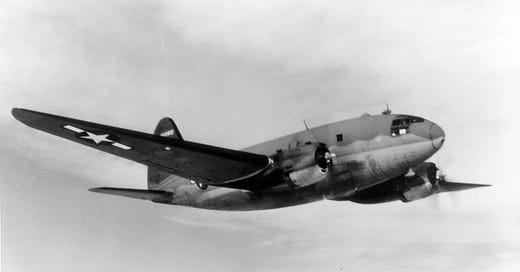TDIH: Cal Poly Football Team Tragedy
The first airline crash involving a United States sports team.
On this day in 1960, a plane carrying the Cal Poly football team crashes in Ohio. The tragedy was the first airline crash involving a United States sports team.
Amazingly, 26 people survived.
The Cal Poly team had been in Ohio to play a football game, of course. That game against Bowling Green hadn’t gone very well. Afterwards, the players just wanted to get home. Surely no one was happy about the dense fog that descended upon the area. Would Cal Poly’s chartered plane be able to take off?
The pilot entrusted with the decision, it was later discovered, was flying with a suspended license: Pilot Donald L.J. Chesher was legally flying while he appealed the suspension. He made the call to take off, but at least one passenger was uncomfortable.
Brent Jobe really did not want to get on the plane. He briefly considered staying behind, but he worried that the coaches wouldn’t let him play if he abandoned the team—so he got on the plane. Many of the others were less concerned, though. “We were 18, we weren’t pilots or anything like that,” offensive guard Roy Scialabba said. “We were just kids trying to get home.”
The plane had been in the air for mere seconds when first one, then the other, engine failed. It was later determined that the plane was overweight. These factors, combined with the fog, ensured that the pilots would lose control of the plane. It hit the ground and caught fire.
The burning wreckage was only 440 yards from the air traffic control tower, but the fog was so dense that the air traffic controller still couldn’t see it.
The Cal Poly quarterback, Ted Tollner, was thrown from the plane. He was strapped to his seat, with his foot caught in a footrest.
“I wanted to get up and start helping people,” he remembers. “But I couldn’t. Carl Bowser dragged me away from the fire . . . .” His most vivid memory is of people screaming. Then “people started shouting that you couldn’t go back in, the plane’s on fire and is about to blow. It did, soon after that.”
Tollner survived only because of a last minute decision to switch seats with Curtis Hill, a wide receiver with aspirations to play in the NFL. Hill hadn’t been feeling too well, and he thought he’d do better at the front of the plane.
Unfortunately, those at the front of the plane wouldn’t survive. Tollner had to learn to live with that survivors’ guilt—as did so many others.
“A lot of us had rough edges after the crash,” fullback Carl Bowser later explained. “We were raising too much hell, living a life of looseness, partying as if we figured what the heck, we might die the next day.”
Unfortunately, the crash also created widows and orphans. The oldest player, 27-year-old Ray Porras had a wife and four kids. His daughters learned about the plane crash from a news report on TV. Mrs. Porras would never speak publicly about what had happened, but her children attended the dedication of a memorial plaza at Cal Poly a few years ago. “We get to hear stories about my dad,” daughter Diana explained.
In the end, 22 of 48 passengers and crew were killed, including the pilot and co-pilot. Of the survivors, 24 were hospitalized—and many would be left with permanent injuries.
Fortunately, a little bit of good came out of the tragedy. The FAA was prompted to implement new safeguards, protecting future flights. Control towers, not pilots, would authorize future departures. Commercial airlines and charter flights would be grounded if visibility was less than one-quarter of a mile.
Rules such as these could have saved the Cal Poly football team.
Sources can always be found on my website, here.





If the ATC can't see the plane through the fog, the tower should definitely ground the plane....
Some really good changes can come out of tragedy. Sometimes we have to discern whether or not certain regulations are valuable. In this case the loss of life prompted necessary adjustments to ensure flying safety. It’s important to make good decisions based on past experience.